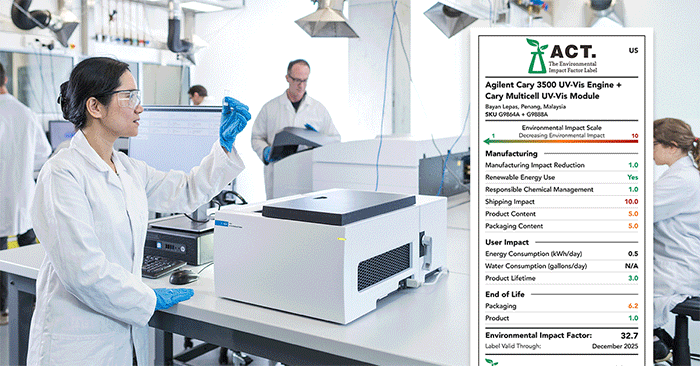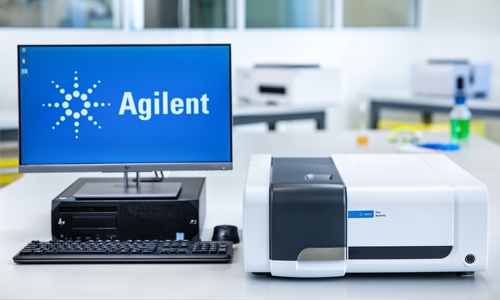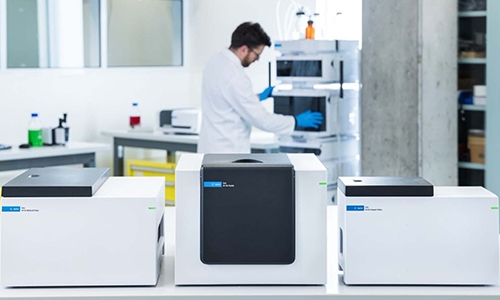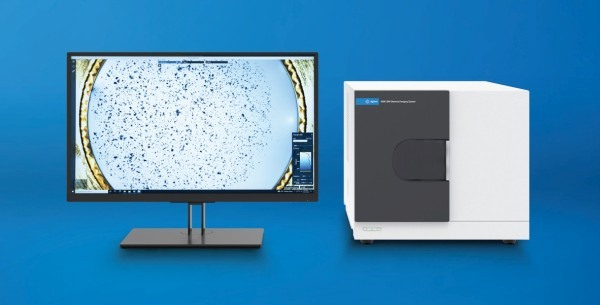
My Green Lab’s ACT labelling - Accountability, consistency, and transparency
There are many reasons why I like working at Agilent. One of those is Agilent’s progress towards sustainability and ultimately a zero-carbon future. Collaborating with My Green Lab, a non-profit founded upon improving sustainability in scientific research, is a natural step towards this goal. My Green Lab's ACT labels verify the environmental impact factor of select Agilent solutions based on manufacturing, user impact, and end of life categories. This level of transparency enables consumers to make better informed purchasing decisions when it comes to the overall sustainability of their lab instrumentation. The ACT labels are thus a vital part of iteratively improving upon processes to reduce waste and further increase the use of renewable energy in instrument production. Change of this magnitude certainly requires much effort, but the potential payoff for all of us is huge. Saving time, money, and the environment all at once is the premise here, so let’s see how Agilent’s scientific innovations apply to this mantra.
10-year warranty xenon flash lamps provide immediate savings for UV-Vis and fluorescence systems


The inclusion of 10-year replacement warranty for the xenon flash lamps in our Cary 60 UV-Vis, Cary 3500 UV-Vis and Cary Eclipse spectrophotometers is made with high confidence in the lifetimes of our lamps. Replacing these critical components less often means far fewer lamps to landfill, and also massively reduces instrument downtime—with some instruments never requiring a lamp change at all.
That’s long enough to forget how to change lamps entirely!
(worry not, if that ever happens our fine Service and Support team is here to help :-)
In addition, the Cary 3500 UV-Vis boasts an incredibly fast air-cooled Peltier multicell module with multiple temperature zone capability. This entirely eliminates the need for recirculating water or anti-freeze and associated regular fluid maintenance and waste. With each temperature zone independently capable of -5 to 100 oC, it never gets old seeing two zones right next to each other operating at these extreme temperatures with little effort. Another efficiency can be gained by running multiple experiments simultaneously!
The Vaya handheld Raman spectrometer eliminates lengthy, wasteful incoming raw material sampling for material verification

Wouldn’t it be neat if there was no need to open containers for content verification? This is exactly what the Vaya handheld Raman spectrometer does! Through-container content verification using the Vaya provides almost immediate savings in time and money, and these add up very quickly. Additionally, with the Vaya there is no longer any need to bin any sampled materials for fear of contamination; the sampling step is eliminated entirely in this workflow as container contents are verified without opening the container itself.
Sending fewer used materials to landfill is always a good thing, and with the immense savings imparted through bypassing the raw material sampling step, the Vaya pays for itself very quickly.
Microplastics: the 8700 LDIR will find you, and the 8700 LDIR will identify you!

Sustainability and reduction of plastic waste go hand in hand these days, especially with microplastics appearing in every corner of our environment, even within animals and humans. Sourcing from where these microplastics originate can go a long way towards waste reduction, and there’s no better instrument on the market to find and identify microplastics than the 8700 LDIR Chemical Imaging System. With its unique quantum cascading laser source and raster scanning approach, the 8700 LDIR’s total scanning times are only limited by the number of particles, making this system the fastest and most efficient overall for microplastic identification.
We’ve only just started our ACT label sustainability journey
Our fantastic line of routine molecular spectroscopy analysis instruments, the Cary 60 UV-Vis, the Cary 3500 UV-Vis (all variants), and the Vaya handheld Raman spectrometer, are all ACT label accredited, but we’re not stopping there. We’ve already begun working towards accruing ACT label accreditation on more of our molecular spectroscopy products, and we’re certain this will lead to even greater technological discoveries. No matter how these new technologies improve the way we look at scientific analyses, one thing is for certain, they are guaranteed to improve productivity while still saving time and money. I’m certainly looking forward to it!
Further reading
- Cary 3500 Multicell UV-Vis Spectrometer ACT Labels
- Cary 3500 Flexible UV-Vis Spectrophotometer ACT Labels
- Cary 3500 Compact UV-Vis Spectrophotometer ACT Labels
- Cary 60 UV-Vis Spectrophotometer ACT Labels
- Vaya Handheld Raman Spectrometer ACT Labels
Molecular spectroscopy webinar series
Get the latest product information and lots of helpful tips and tricks from our frequent molecular spectroscopy webinars. These live and interactive sessions take place every week, with all previous sessions available to watch on-demand.
Got a question? Leave a note on the comments below or send your query directly to our expert spectroscopy team.
